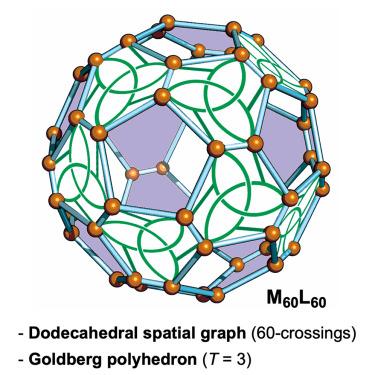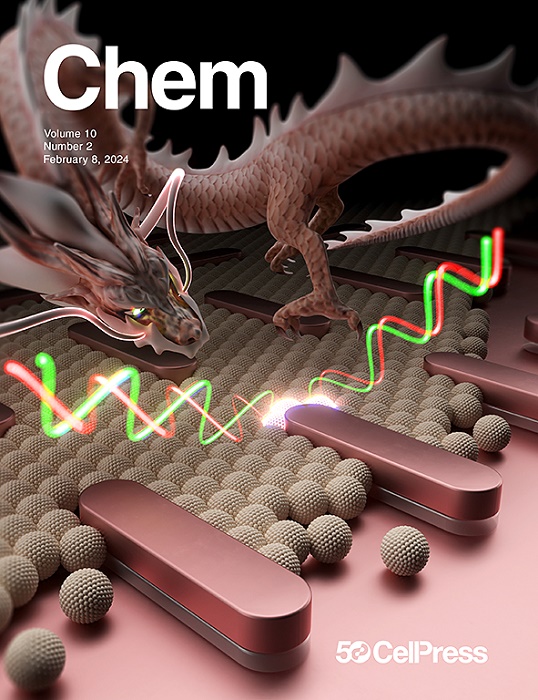An M60L60 metal-peptide capsid with a 60-crossing woven network
IF 19.6
1区 化学
Q1 CHEMISTRY, MULTIDISCIPLINARY
引用次数: 0
Abstract
Controlling topologies of highly entangled molecular strands from scratch has long been challenging. For its realization, repeated cycles of prediction, considering the geometrical constraints behind molecular self-assembly, and synthetic trial-and-error are crucial. Here, we report the chemical construction of an unexplored topological molecule—a dodecahedral link with 60 crossings. This structure, predicted through theoretical considerations, represents an advancement from previous tetrahedral and cubic links. The resulting capsid-like structure, measuring 6.3 nm in size, has an M60L60 composition (M, metal; L, ligand), formed through the folding and assembly of 60 trivalent Cu+ ions and 60 tritopic pentapeptide ligands. This entangled topological framework formed a 4.0 nm-sized inner cavity (∼34,000 Å3). The 60-crossing dodecahedral link topology was, in another way using both knot and graph theories, also characterized as a Goldberg T = 3 polyhedron (T, triangulation number) consisting of trefoil knot panels, providing a new roadmap to further giant capsid structures.


M60L60金属肽衣壳具有60交叉编织网络
从零开始控制高度纠缠的分子链的拓扑结构一直是一个挑战。为了实现它,反复的预测周期,考虑到分子自组装背后的几何约束,以及合成的试错是至关重要的。在这里,我们报告了一个未开发的拓扑分子的化学结构-一个具有60个交叉点的十二面体链。这种结构,通过理论考虑预测,代表了先前四面体和立方链的进步。所得到的衣壳状结构尺寸为6.3 nm,具有M60L60成分(M,金属;L,配体),由60个三价Cu+离子和60个三价五肽配体折叠组装而成。这种纠缠的拓扑框架形成了4.0 nm大小的内腔(~ 34000 Å3)。60个交叉点的十二面体连接拓扑,以另一种方式使用结和图理论,也被描述为由三叶结面板组成的Goldberg T = 3多面体(T,三角化数),为进一步的巨型衣壳结构提供了新的路线图。
本文章由计算机程序翻译,如有差异,请以英文原文为准。
求助全文
约1分钟内获得全文
求助全文
来源期刊

Chem
Environmental Science-Environmental Chemistry
CiteScore
32.40
自引率
1.30%
发文量
281
期刊介绍:
Chem, affiliated with Cell as its sister journal, serves as a platform for groundbreaking research and illustrates how fundamental inquiries in chemistry and its related fields can contribute to addressing future global challenges. It was established in 2016, and is currently edited by Robert Eagling.
 求助内容:
求助内容: 应助结果提醒方式:
应助结果提醒方式:


